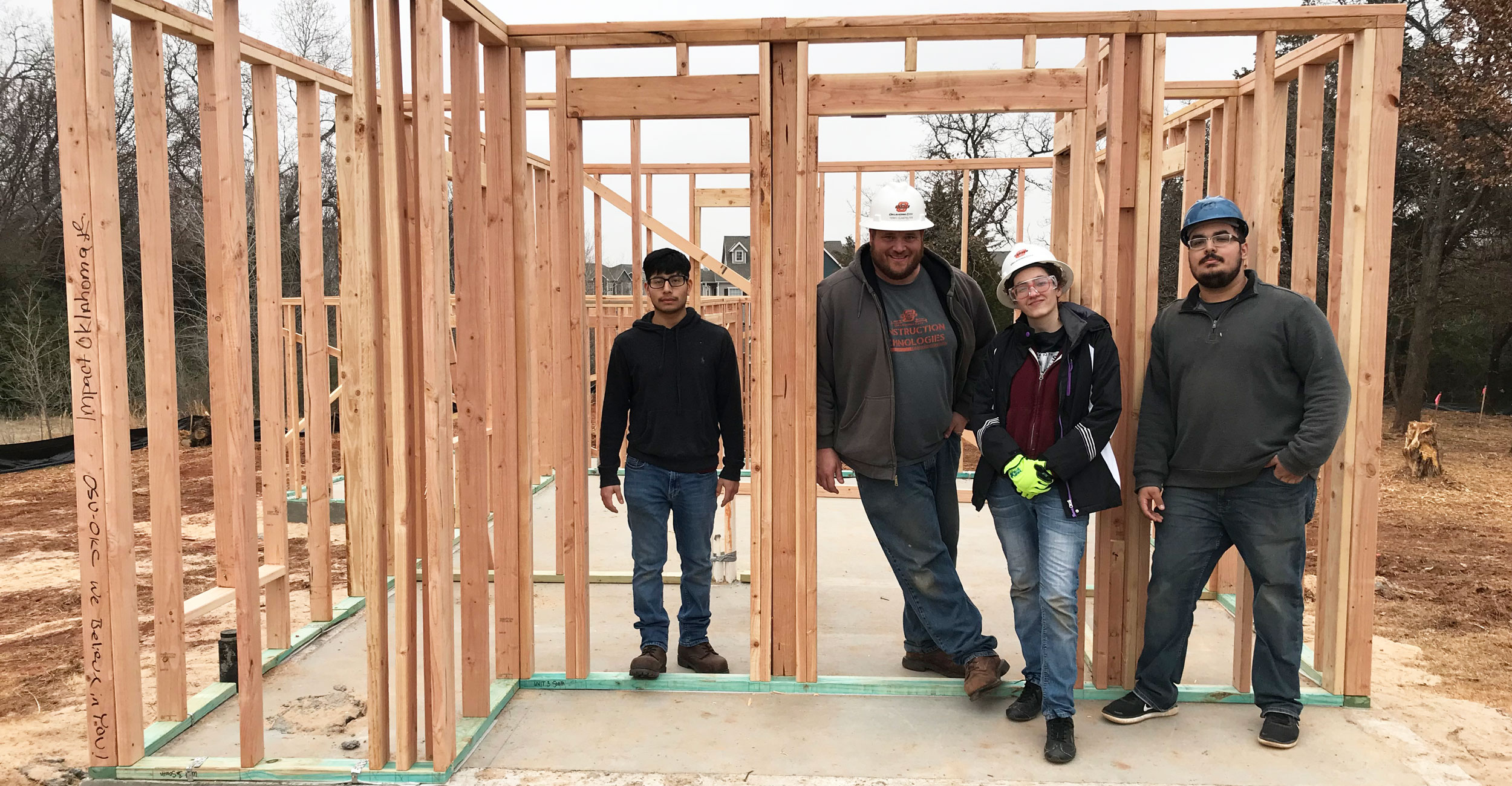
OSU-OKC and OSU-Stillwater students help develop tiny homes
Wednesday, July 27, 2022
Media Contact: Jeff Hopper | College of Engineering, Architecture and Technology | 405-744-2745 | jeff.hopper@okstate.edu
Oklahoma State University students from the Oklahoma City and Stillwater campuses recently contributed to the construction and architectural design of tiny homes on the Pivot Inc. campus in Oklahoma City.
Pivot, a nonprofit, has opened 26 homes in the last five years for teens and young adults who are homeless or aging out of the foster care system.
Dr. Terry Clinefelter, OSU-OKC department head of construction technologies, worked with Paolo Sanza, associate professor at the OSU School of Architecture, to involve students in this community project.
“My interest in housing motivated me to be involved in this project. When I teach, I like to give students an actual project to complete,” Sanza said. “I thought this was a good starting point and, at the same time, a way to contribute to the community and be involved with outreach.”
Sanza said the project was perfect for third-year architecture students in his design studio. He quickly coined the project name — Matchbox 17 — and created a project brief to share with them.
Sanza’s 14 students met with Pivot in January 2020 and were challenged to design these small spaces — from the placement of each stud to each piece of furniture — rather than just designing an empty shell, Sanza said.
Requirements included that the tiny house must not exceed 280 square feet and be constructed utilizing light-framing construction techniques. The micro-dwelling required space for living, cooking, sleeping and hygiene — shower and toilet — for a single person. Also, areas for outdoor living like a porch were encouraged.
Students were given a construction budget of $140 per square foot or around $40,000 per unit.
Katelyn Mann, a 2021 OSU architecture graduate, and her group partner Tiffany Mollohan, focused their designs on the ability to be personalized for each resident while still creating as much space as possible. Each of their homes had a different color scheme.
“Our structure was a classic homestyle shape, but it was broken up and divided into two levels,” Mann said. “Since a lot of the homes have a very open floor plan, we started to put wood slat dividers to divide the bed from the kitchen and living areas to help privacy.
“Then a lot of our focus was on things that were retractable, so having furniture that could fold into walls, or having dual space from the closet connecting to the bathroom, that way you have more compact zones.”
The pair even included special safety features in the home to make the resident feel comfortable, Mann said.
In February 2020, after the students presented their projects, Clinefelter and Sanza reviewed them with the students and discussed what was practical and how to make their designs more cost-effective. Then, students sent their permit drawings to the city.
However, due to COVID-19, classes were moved online and students went home, putting a halt to the next phase of the project.
Clinefelter started OSU’s involvement with the project in 2018 when he was approached with an opportunity for students to make an impact on their community and enhance their skills.
Students enrolled in the OSU-OKC construction management and architecture program built the first three homes for Pivot in 2018.
“It's really hard to walk away from a project that benefits a community like that,” Clinefelter said. “It was nothing that was mandated or for us, it was just a very organic process to get involved in something that I know that my students, and myself personally, are going to always kind of remember as probably one of the highlights.”
Colton Hinojosa, a 2019 OSU-OKC architecture graduate, participated in the construction of the homes by building interior walls in 2018.
“When you sit through architecture classes, that's one way of learning it, but until you actually get out on the field and build something, that's to me where you gain a lot of your knowledge and learning,” Hinojosa said.
It was a humbling experience and an amazing opportunity to contribute to his community,
he said.
“The project in general highlights the ability of individuals and their career choices to impact the communities they live in,” Clinefelter said. “Within the different projects, you have a combination of private and public entities that came together to meet the needs of the Oklahoma City community and really set a standard that can be reproduced across the country.”
